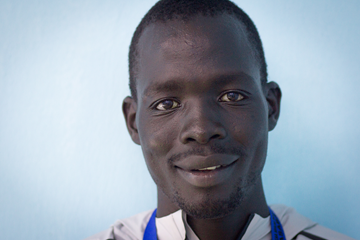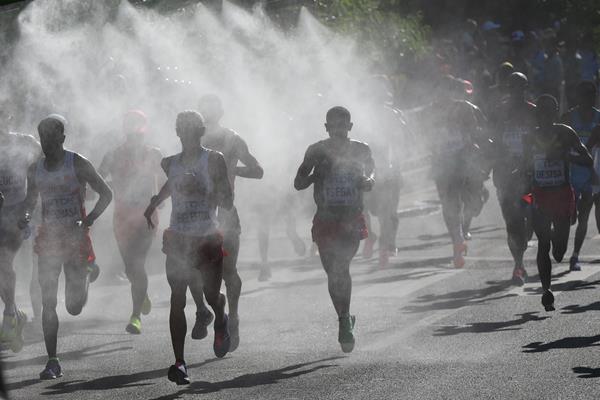New research conducted in part by the IAAF's Health and Science Department underscores the importance that proper readiness plays when preparing to compete in extreme conditions.
Focusing on Tokyo as it continues its preparations to host the 2020 Olympic Games, researchers analysed five decades of meteorological data to help paint a picture of the conditions that organisers, competitors and fans can expect in the Japanese capital 19 months from now. As expected, heat stress levels are expected to be high.
“It’s going to be hot, we all know that and looking back at 40 years of weather data from Tokyo confirms this," said IAAF’s Health and Science Department Manager Paolo Emilio Adami, a co-author of the paper, 'Quantifying Thermal Stress for Sport Events — The Case of the Olympic Games 2020 in Tokyo', which was published in the journal Atmosphere in December. "We should be concerned but most of all we should be informed and act in due time."
The study showed that the hottest period of the year is found between mid-July to August. The Tokyo Games will take place from 24 July to 9 August.
The authors, who include IAAF Health & Science Department Director Stéphane Bermon, Andreas Matzarakis, Chair of Environmental Meteorology at the Albert-Ludwigs-University Freiburg and Dominik Fröhlich from the Research Centre Human Biometeorology at the German Meteorological Service, said the intention of the study wasn't to prove a location unsuitable to host an event, but rather to provide organisers and other decision makers with a useful methodology to assess conditions to take timely action in order to allow safe participation for athletes and spectators.
“Events are held in hot conditions around the world, whether it is Tokyo or Doha or Melbourne, where the Australian Open tennis is this week," Adami said.
"As long as we are aware of the conditions and we prepare for them, it should be possible to mitigate the risk. But that applies not only to the athletes. It also applies to their support teams, the workforce and the spectators, everyone who is involved in the event.
“In fact,” Adami added, “the athletes might not be those at highest risk because they are much more likely to be prepared and fit.”
The paper outlines in more detail how visitors and tourists are the groups mostly affected by extreme meteorological conditions, due to the usually short acclimatisation time and lack of information on how to counteract the effects of heat while travelling. Proper hydration schedules, shading behaviours and clothing should be adopted when exposed to outdoor conditions.
Athletes, meanwhile, are advised to arrive at the competition location at least two weeks prior to the event to allow them to progressively acclimatise to the local climatic conditions and increase the exercising load up to the day of competition.
The paper also explains how microclimates within urban environments, such as Tokyo, may be modified by planning measures to achieve a reduction of heat load on people attending the event.
In its conclusion, the paper explains how the effects of heat stress can be significantly reduced by carefully setting the time of day. Even in the hottest time of the year, comfortable conditions can be met in the early morning or late afternoons.
IAAF







 Countdown
Countdown





